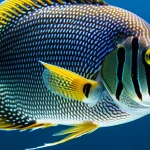Community-Based Conservation Strategies in the UK
Community-based conservation in the UK prioritizes local involvement as a cornerstone of successful conservation strategies. These initiatives tap into the knowledge, enthusiasm, and stewardship of residents, fostering a stronger connection between people and their environment. Commonly, conservation groups adopt models emphasizing collaboration and education, such as citizen science projects, habitat restoration volunteer programs, and local wildlife monitoring networks.
One prevalent approach involves empowering communities to take ownership of nearby habitats. This is often structured through partnerships between environmental charities and local councils, promoting sustainable land use and species protection. For example, community conservation initiatives encourage residents to participate in practical activities like planting native species or building shelters for vulnerable wildlife.
Additional reading : What Are the Lesser-Known Animal Habits in the UK?
UK wildlife community engagement also includes awareness campaigns and workshops, equipping people with skills and information to contribute meaningfully. By integrating these strategies, local populations become active custodians rather than passive observers, reinforcing long-term conservation goals. Such frameworks underscore the importance of bottom-up action, where conservation success is amplified through grassroots enthusiasm and shared responsibility.
Outreach and Education Initiatives
Educating the public is a cornerstone of effective conservation education UK efforts. Many wildlife organizations prioritize youth engagement wildlife through school partnerships and dedicated programs. These initiatives tailor content to inspire young learners, making conservation relatable and actionable. By connecting schools with experts, students gain hands-on experience and develop lasting conservation values early on.
Also to discover : How is agriculture impacting biodiversity in the UK?
In addition to youth programs, public outreach conservation events play a vital role. Workshops, talks, and community events offer accessible ways for people of all ages to understand local wildlife challenges. These gatherings often cover practical tips for supporting habitats and highlight ongoing conservation projects.
By blending school partnerships with broad public workshops, conservation groups ensure their messages reach diverse audiences. This comprehensive approach supports informed communities equipped to participate in wildlife preservation actively. These educational activities help transform awareness into meaningful action, boosting conservation efforts across the UK.
Citizen Science and Volunteer Programs
Harnessing community power for conservation
Citizen science projects in the UK play a pivotal role in species monitoring and community data collection wildlife efforts. These projects invite everyday people to contribute valuable observations that support scientific research and environmental management. Volunteer conservation roles often include recording local flora and fauna, conducting surveys, and monitoring habitats in real-time. This hands-on involvement boosts data quantity and quality while fostering local engagement.
Many programs provide comprehensive training to volunteers, ensuring accurate data collection and enabling participants to grow their ecological knowledge and skills. Volunteers learn to identify species, use monitoring equipment, and follow standardized methodologies, which enhances the reliability of their contributions.
The synergy between scientific institutions and citizen volunteers creates a rich network that enhances biodiversity databases and informs conservation policies. Enthusiasts can find diverse opportunities tailored to different interests and skill levels, making citizen science projects in the UK accessible and rewarding for all. Engaging in these roles not only supports wildlife but also builds a connected, informed community dedicated to environmental stewardship.
Partnerships with Local Groups and Stakeholders
Building strong wildlife organization partnerships UK is essential for effective conservation. These partnerships often involve collaboration with local councils, landowners, and businesses, creating a foundation for shared responsibility. By engaging these diverse stakeholders, conservation projects gain broader support and resources, increasing the likelihood of success.
Community-stakeholder collaboration facilitates the pooling of knowledge and expertise, helping identify key challenges and tailored solutions specific to each locale. Multi-stakeholder networks serve as vital platforms where different interests converge, aligning goals and fostering transparency. Together, these networks influence conservation outcomes by enabling coordinated actions and reducing conflicts over land use or resource management.
In practice, partnerships with local groups enable targeted efforts such as habitat restoration or species monitoring, benefiting from local insights and stewardship. Additionally, these collaborations build trust and encourage participation, essential for long-lasting conservation impact. The integration of multiple voices through conservation networks enhances adaptability, ensuring strategies evolve with environmental and social changes.
Such collective engagement is foundational to sustaining biodiversity and promoting conservation initiatives across the UK.
Success Stories: Impact of Community Engagement
Community engagement has proven pivotal in driving conservation success across the UK. One standout example is the Royal Society for the Protection of Birds (RSPB), which harnesses volunteer power and local participation to restore critical habitats. Their dedicated efforts have resulted in significant increases in bird populations, showcasing the tangible outcomes of wildlife engagement.
Similarly, Wildlife Trusts have mobilized communities nationwide, fostering a connection between people and nature. These organizations employ case studies of wildlife engagement to illustrate how local knowledge and passion lead to sustainable conservation. For instance, citizen science projects have empowered residents to monitor endangered species, enhancing data collection and making conservation more effective.
The impact of community involvement goes beyond ecological benefits. It nurtures stewardship and raises awareness, creating a culture where conservation is a shared responsibility. These successes emphasize that when local people are active participants rather than passive observers, the outcomes are more resilient and impactful.
By focusing on collaboration between organizations and communities, these case studies underline the importance of grassroots action in achieving long-term conservation goals.



